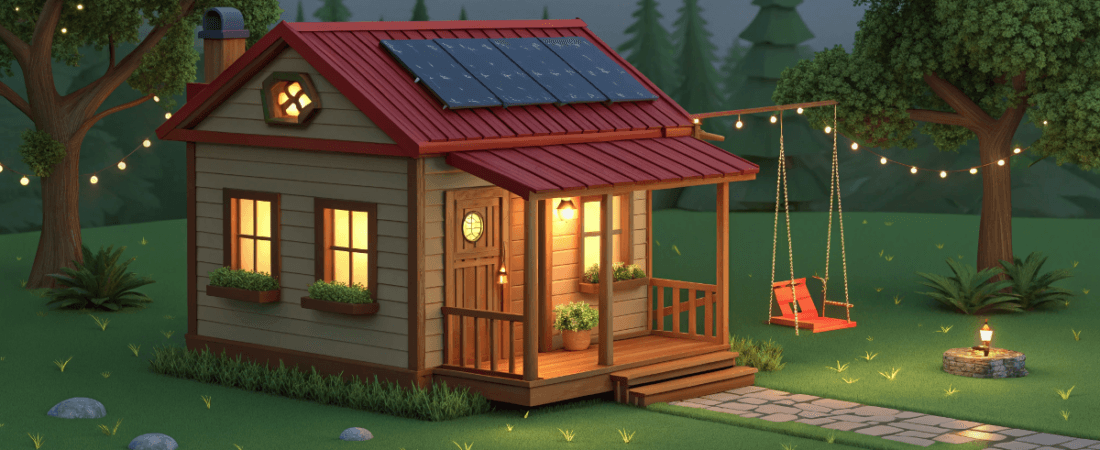Curious about living in an off grid tiny house? This guide covers the benefits, setting up off-grid power and water, waste management, keeping your home comfortable, finding land, and living sustainably. Learn how to enjoy a minimalist, self-sufficient lifestyle.
- Key Takeaways
- Why Choose an Off Grid Tiny House?
- Powering Your Off Grid Tiny House
- Water Supply Solutions for Off Grid Tiny Homes
- Managing Waste in an Off Grid Tiny House
- Heating and Cooling Your Off Grid Tiny Home
- Designing and Building Your Off Grid Tiny House
- Finding Land for Your Off Grid Tiny House
- Living Sustainably in an Off Grid Tiny House
- Staying Connected While Living Off Grid
- Safety and Security in an Off Grid Tiny House
- Maintenance Tips for Off Grid Tiny Homes
- Summary
- Frequently Asked Questions
Key Takeaways
Choosing an off-grid tiny house promotes financial freedom, reduces environmental impact, and offers flexibility in living arrangements.
Key power solutions include solar panels, wind power, and rainwater collection, all supporting sustainability and self-sufficiency.
Effective waste management, reliable heating and cooling, and smart design choices are essential for creating a comfortable and eco-friendly tiny home.
Why Choose an Off Grid Tiny House?
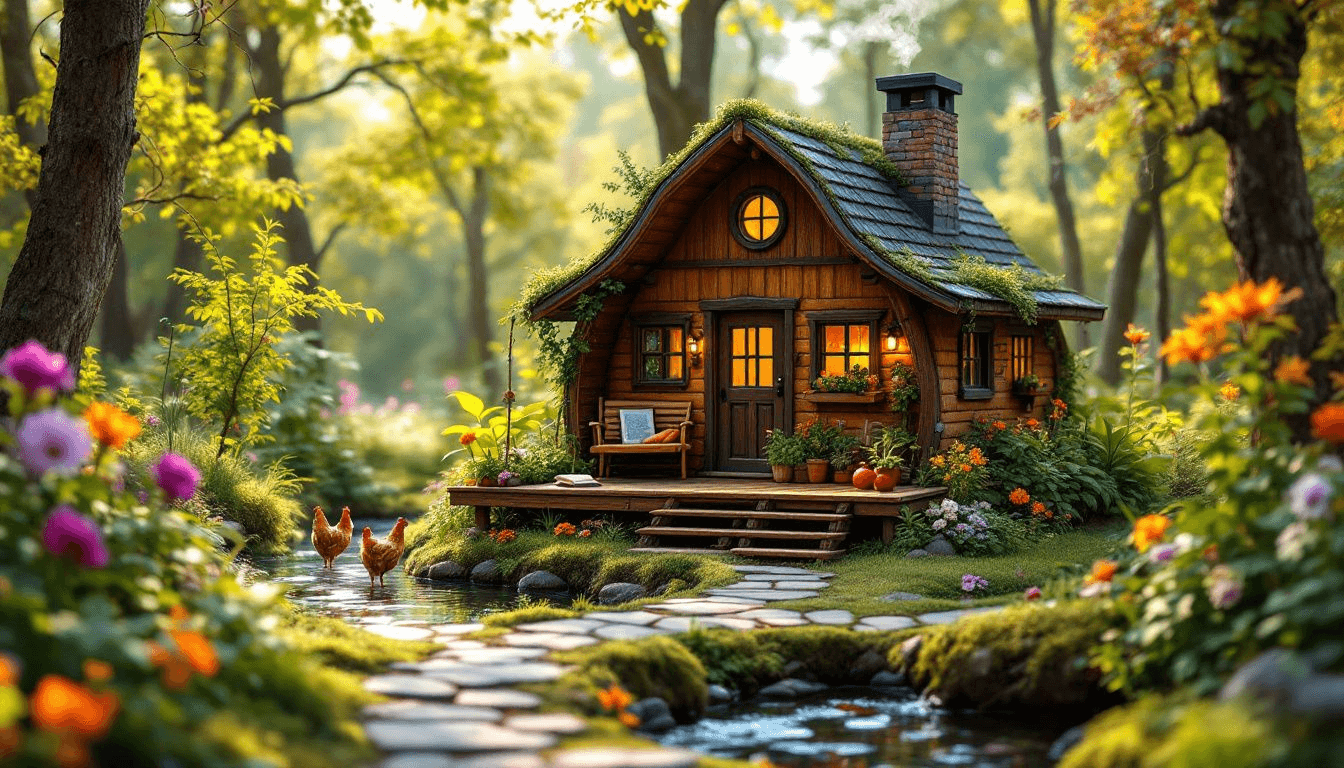
Choosing an off-grid tiny home offers a plethora of benefits that make this lifestyle incredibly appealing. One of the most significant advantages is financial freedom. Living off-grid removes the burden of costly utility bills, freeing up funds to invest in other areas of your life. This financial relief is a major draw for many who are tired of the relentless cycle of monthly expenses.
Moreover, living off the grid significantly reduces your environmental footprint and can help you save money. Sourcing your own power, water, and waste management makes you more conscious of your consumption and its environmental impact. This lifestyle promotes self-reliance, as you learn to source your basic needs from the land, fostering a sense of accomplishment and independence.
Another compelling reason to choose a tiny house is the flexibility it offers. Unlike traditional homes, tiny houses are not bound to municipal utility access, allowing you to live in diverse and often more scenic locations. This also encourages a minimal waste approach, as managing your waste and resources becomes a daily practice, fostering a cleaner and more sustainable way of life.
Powering Your Off Grid Tiny House
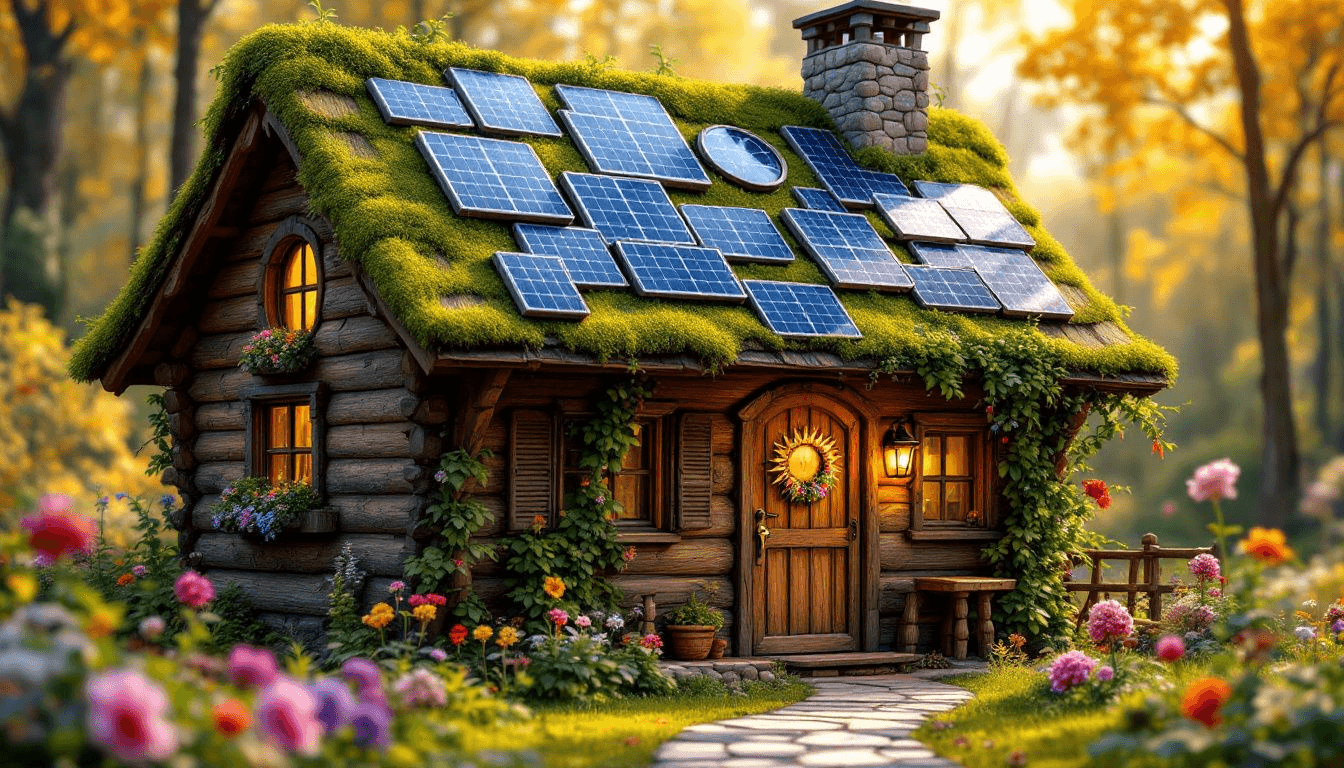
Powering an off-grid tiny home can seem daunting, but with the right knowledge, it becomes an exciting challenge.
Popular energy sources include:
Solar panels, which convert sunlight into quick electricity using photovoltaic cells, typically mounted on the top of the roof.
Wind power, which harnesses the energy of the wind to generate electricity.
Hydropower, which uses flowing water to produce energy.
Backup generators, which provide electricity when other sources are insufficient.
Solar panels are a favorite among tiny house enthusiasts because, while the initial expense of installation can be high, the long-term savings on electricity bills make it a worthwhile investment.
Wind turbines are another option, converting wind energy into electricity. However, they are often more effective as a supplementary source due to the variability of wind. When planning your power system, consider both the installation complexity and local climate conditions to determine the best setup for your needs.
Using renewable energy sources like solar power not only reduces your reliance on fossil fuels but also aligns with the off-grid living ethos of sustainability. By harnessing the natural elements, you can create a self-sufficient energy system that powers your tiny home efficiently and sustainably.
Water Supply Solutions for Off Grid Tiny Homes
Securing a reliable water supply is crucial for any off-grid tiny home. One common solution is drilling a well, which provides a steady water source. However, wells usually require a pump to pressurize the water for household use.
Another sustainable option is a rainwater collection system, which captures and stores rainwater for later use. These systems often require large cisterns or holding tanks to be effective and may need a pump to transfer the water from the cistern to the house.
When considering a rainwater collection system, it’s essential to research local regulations to ensure compliance. Freshwater holding tanks are another viable solution, especially for those who prefer to truck in water or fill up while on the road. Each of these options offers a way to live off-grid without compromising on water availability or quality.
Managing Waste in an Off Grid Tiny House
Managing waste in an off-grid tiny house requires innovative and eco-friendly solutions. A composting toilet is a popular choice, as it converts human waste into compost for gardening, significantly reducing environmental impact. These toilets use natural processes to break down waste, and regular maintenance involves checking the ventilation system and ensuring an adequate mix of carbon-rich materials. Self-contained composting toilets are particularly efficient and easy to install in tiny homes.
Greywater systems are another essential component, filtering and reusing water from sinks and showers. This water can be repurposed for irrigation, reducing overall water consumption. However, it’s important to adhere to local regulations to ensure safe and compliant disposal.
Together, these waste management systems help create a sustainable and environmentally friendly off-grid living environment.
Heating and Cooling Your Off Grid Tiny Home
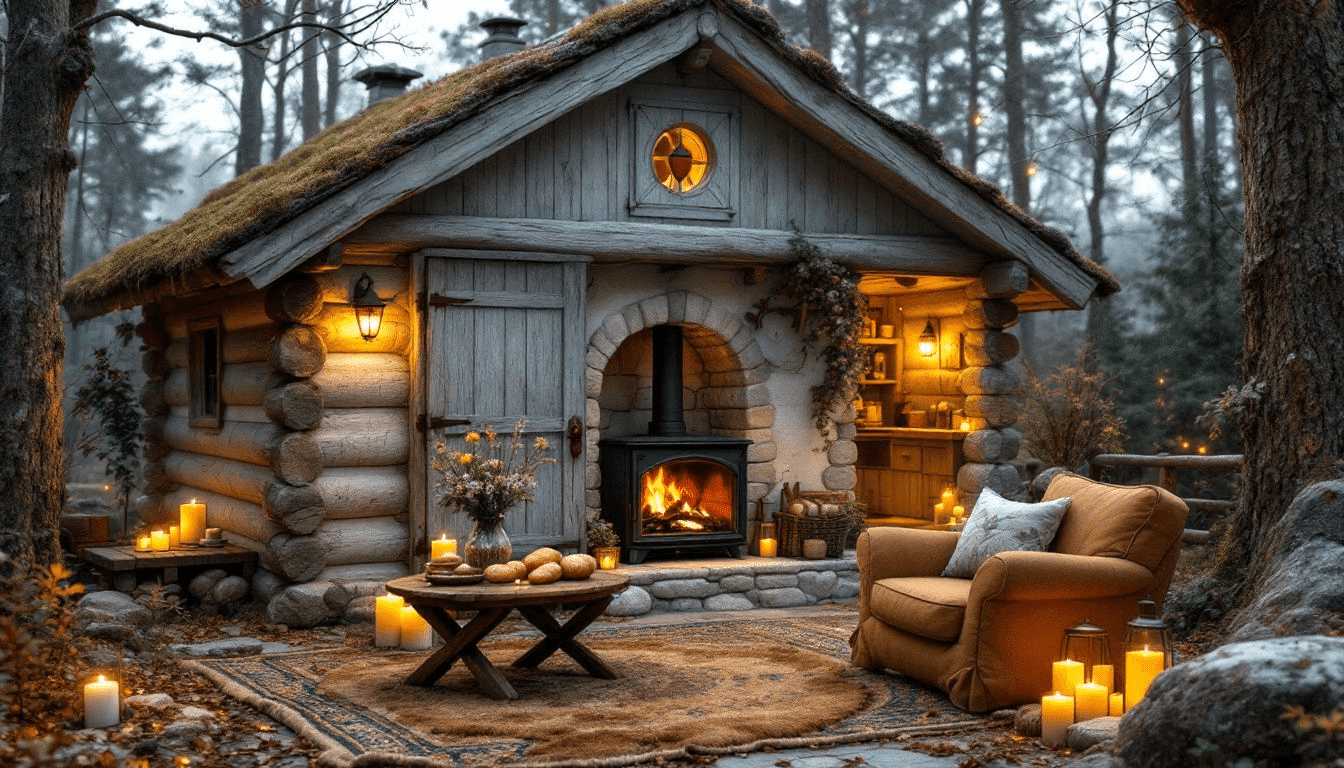
Heating and cooling your off-grid tiny home are vital for comfort and livability. A wood burning stove, like the Jotul 602, is highly effective for heating small spaces and provides a cozy atmosphere. Propane heaters, such as the Newport Propane Fireplace, are also favored for their efficient heat circulation. For those with access to electricity, electric heaters offer a cost-effective solution.
Cooling can be achieved through natural ventilation, which enhances airflow and maintains comfortable living conditions. Combining these heating and cooling methods ensures your tiny home stays comfortable throughout the year, no matter the weather.
Designing and Building Your Off Grid Tiny House
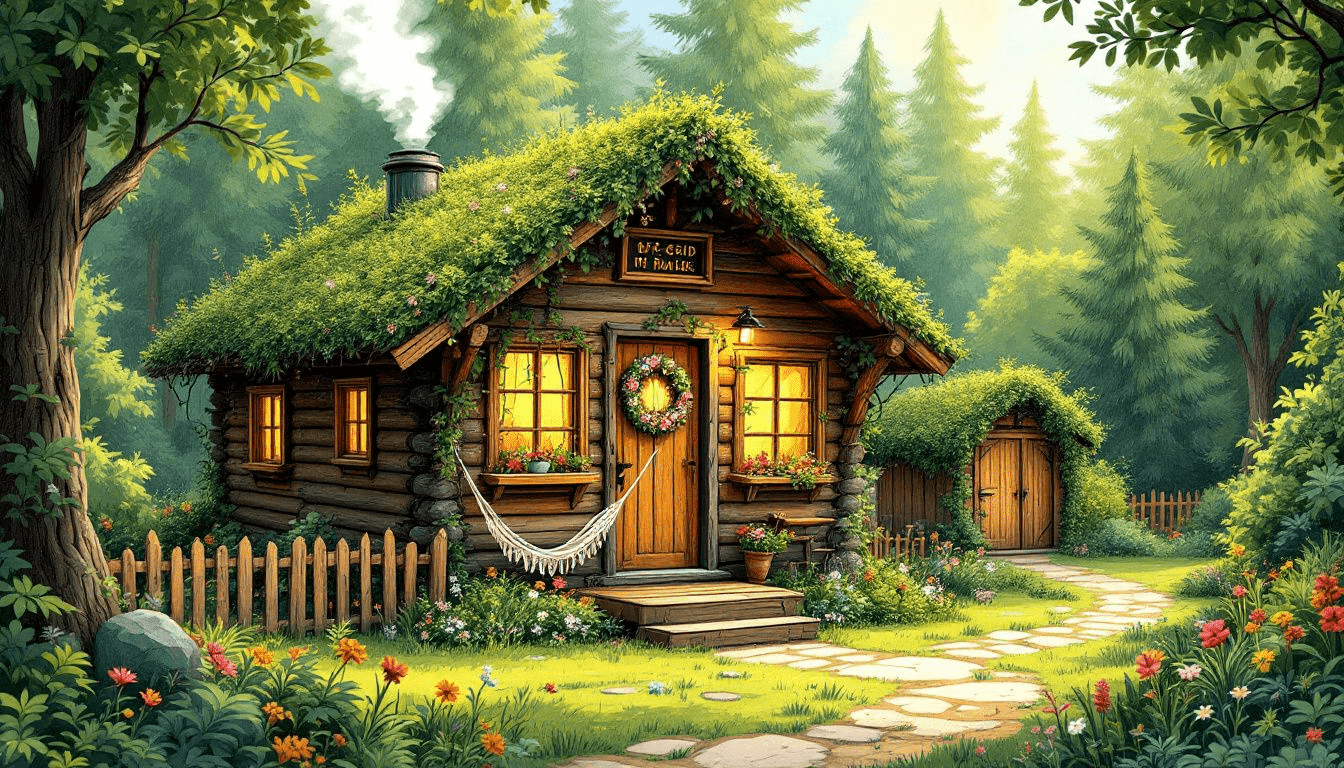
Designing and building an off-grid tiny house requires careful planning and attention to detail. The planning phase is crucial, as small errors can have significant impacts. Proper room orientation and layout can optimize natural light and energy efficiency, making your tiny home more comfortable and sustainable.
Choosing high-quality materials is essential to ensure durability and efficiency. Structural insulated panels (SIPs), reclaimed materials, and recycled materials are excellent choices for eco-friendly construction. Effective insulation is also vital in maintaining comfortable temperatures and energy efficiency.
Maximizing space in a tiny home involves downsizing belongings, utilizing vertical storage, and incorporating multi-functional furniture. These strategies help create a functional and organized living space despite the limited square footage. Additionally, incorporating a small gardening space allows for home-grown food, enhancing sustainability, ensuring there is enough space for all essential activities.
Focusing on these design and construction principles helps create a tiny home that is beautiful, functional, sustainable, and self-sufficient.
Finding Land for Your Off Grid Tiny House
Finding the right land for your off-grid tiny home is a critical step in the process. Zoning regulations are crucial to verify before purchasing land, as they determine the legality of building a tiny home. Additionally, legal restrictions may impact the construction of rainwater collection systems, so thorough research is necessary.
Considering mineral and water rights when acquiring land is crucial, as they can impact your resource usage on the property. Alternative options for land include renting or leasing from private owners, or utilizing campgrounds and RV parks.
Assessing environmental factors such as soil stability and climate conditions ensures the land is safe and habitable.
Living Sustainably in an Off Grid Tiny House
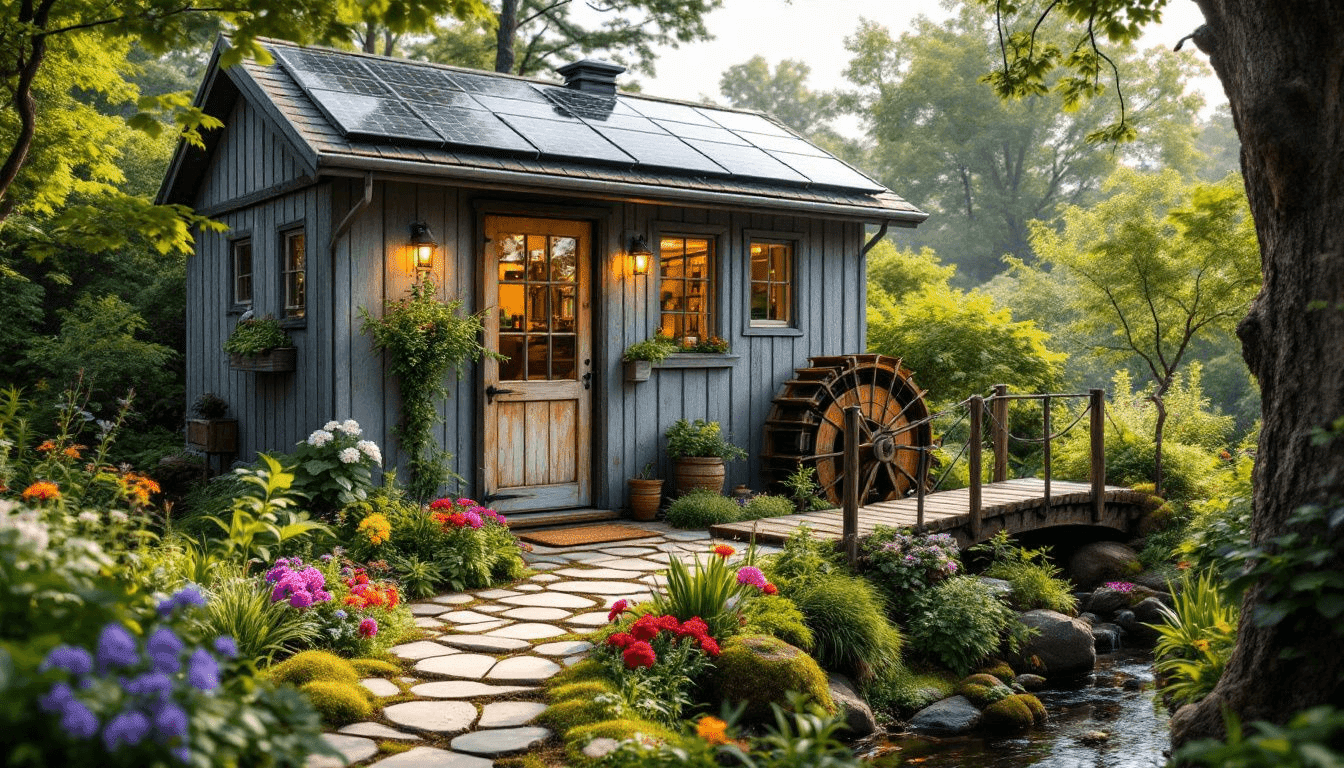
Living sustainably in an off-grid tiny house is all about minimizing environmental impact while maximizing self-sufficiency. Incorporating reclaimed and recycled materials in construction enhances sustainability and minimizes waste. The benefits of off-grid living include reduced living expenses, a simpler lifestyle, and a lower carbon footprint.
Sustainable living focuses on self-sufficiency through practices like growing your own food and utilizing renewable energy sources. These efforts not only benefit the environment but also create a more fulfilling and independent way of life.
Staying Connected While Living Off Grid
Staying connected while living off-grid is crucial for communication, work, and safety. Satellite internet is widely used due to its availability in remote areas, though it requires a clear view of the sky and can be affected by weather conditions. Mobile hotspots, which use cellular networks to provide internet access, are another option but depend on cellular coverage.
Fixed wireless internet connects users to local towers, offering faster speeds than satellite but with limited coverage in remote regions. Long-range Wi-Fi extenders and mesh networks can improve connectivity, especially for larger off-grid properties.
Choosing an off-grid internet solution involves evaluating factors like location, usage needs, budget, and mobility.
Safety and Security in an Off Grid Tiny House
Safety and security are paramount when living in an off-grid tiny house. A robust locking mechanism on doors and windows is essential for securing your home. Creating an emergency preparedness plan that includes security measures, communication strategies, and emergency contacts is also vital.
Training a dog to act as a protector can provide both companionship and security, adding an extra layer of safety to your off-grid lifestyle. These precautions ensure your tiny home remains a safe and secure haven.
Maintenance Tips for Off Grid Tiny Homes
Maintaining an off-grid tiny home involves regular upkeep and a proactive approach. Developing a cleaning schedule and using eco-friendly products helps maintain a tidy living space. Biannual maintenance on systems such as mini splits, including cleaning filters and inspecting evaporator coils, is essential.
In winter, proper skirting protects utilities from freezing and maintains heat efficiency. Monitoring indoor humidity levels between 45% to 55% prevents condensation and potential mold growth.
Freshwater holding tanks should be managed by filling them while traveling or transporting water to the tiny home. Building a support network of professionals for maintenance tasks is crucial for the upkeep of your tiny home.
Summary
Living off-grid in a tiny house offers a unique blend of financial freedom, environmental responsibility, and self-sufficiency. From powering your home with renewable energy to managing water and waste sustainably, each aspect of this lifestyle contributes to a more fulfilling and independent way of living. Designing and building your tiny home with careful planning and high-quality materials ensures durability and efficiency.
Finding the right land and staying connected are vital for a successful off-grid experience. By incorporating sustainable practices and maintaining your home diligently, you can enjoy the numerous benefits of off-grid tiny house living. Whether you’re just starting your journey or looking to enhance your current setup, this guide provides the insights and inspiration needed to thrive in your off-grid tiny home.
Frequently Asked Questions
What are the benefits of living in an off-grid tiny house?
Living in an off-grid tiny house gives you financial freedom and a lighter environmental footprint while promoting self-reliance. It’s a great way to embrace a simpler, more sustainable lifestyle!
How can I power my off-grid tiny home?
To power your off-grid tiny home, solar panels are a fantastic choice due to their efficiency and long-term savings. Wind turbines and backup generators are also great options to consider for additional energy needs.
What are the water supply options for off-grid tiny homes?
For off-grid tiny homes, you can rely on wells, rainwater collection systems, and freshwater holding tanks to ensure you have a steady water supply. Each option has its pros, so consider what works best for your location and needs.
How do I manage waste in an off-grid tiny house?
Managing waste in an off-grid tiny house is well done with composting toilets and greywater systems, as they not only minimize your environmental footprint but also support a sustainable lifestyle. Embracing these solutions can make your tiny home experience much more eco-friendly!
How can I stay connected while living off-grid?
You can stay connected off-grid with options like satellite internet, mobile hotspots, fixed wireless solutions, and long-range Wi-Fi extenders. These tools will help you maintain a connection no matter where you are!


